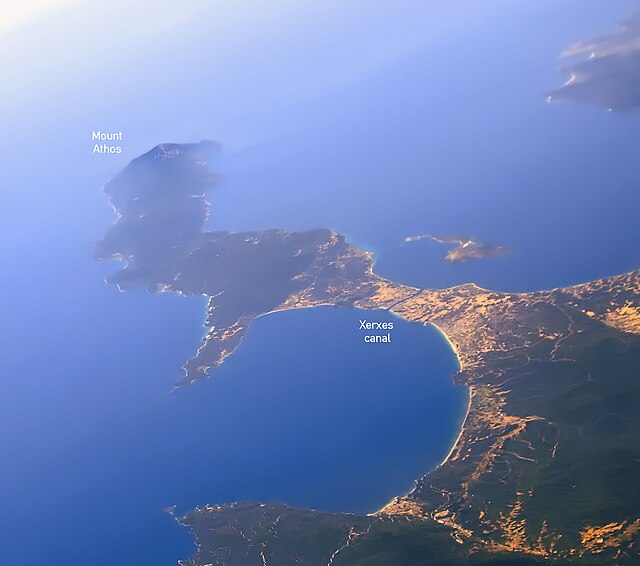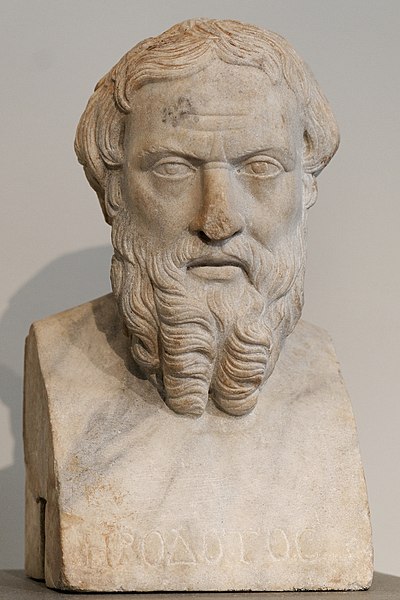Second Persian invasion of Greece
The second Persian invasion of Greece occurred during the Greco-Persian Wars, as King Xerxes I of Persia sought to conquer all of Greece. The invasion was a direct, if delayed, response to the defeat of the first Persian invasion of Greece at the Battle of Marathon, which ended Darius I's attempts to subjugate Greece. After Darius's death, his son Xerxes spent several years planning for the second invasion, mustering an enormous army and navy. The Athenians and Spartans led the Greek resistance. About a tenth of the Greek city-states joined the 'Allied' effort; most remained neutral or submitted to Xerxes.
Second Persian invasion of Greece
The Spartans throw Persian envoys into a well.
Rendition of the Xerxes Canal (seen from north), built over 3 years from 483 BC across the Mount Athos peninsula. It is now filled-up.
Preparations of the army of Xerxes, with quarters in Sardis in 481–480 BC, and crossing of the Hellespont at Abydos.
The Greco-Persian Wars were a series of conflicts between the Achaemenid Empire and Greek city-states that started in 499 BC and lasted until 449 BC. The collision between the fractious political world of the Greeks and the enormous empire of the Persians began when Cyrus the Great conquered the Greek-inhabited region of Ionia in 547 BC. Struggling to control the independent-minded cities of Ionia, the Persians appointed tyrants to rule each of them. This would prove to be the source of much trouble for the Greeks and Persians alike.
Combat between a Persian soldier (left) and a Greek hoplite (right), depicted on a kylix at the National Archaeological Museum of Athens
Herodotus, the main historical source for this conflict
Thucydides continued Herodotus's narrative
Persian and Median Immortals in ceremonial dress, bas-relief in Persepolis








